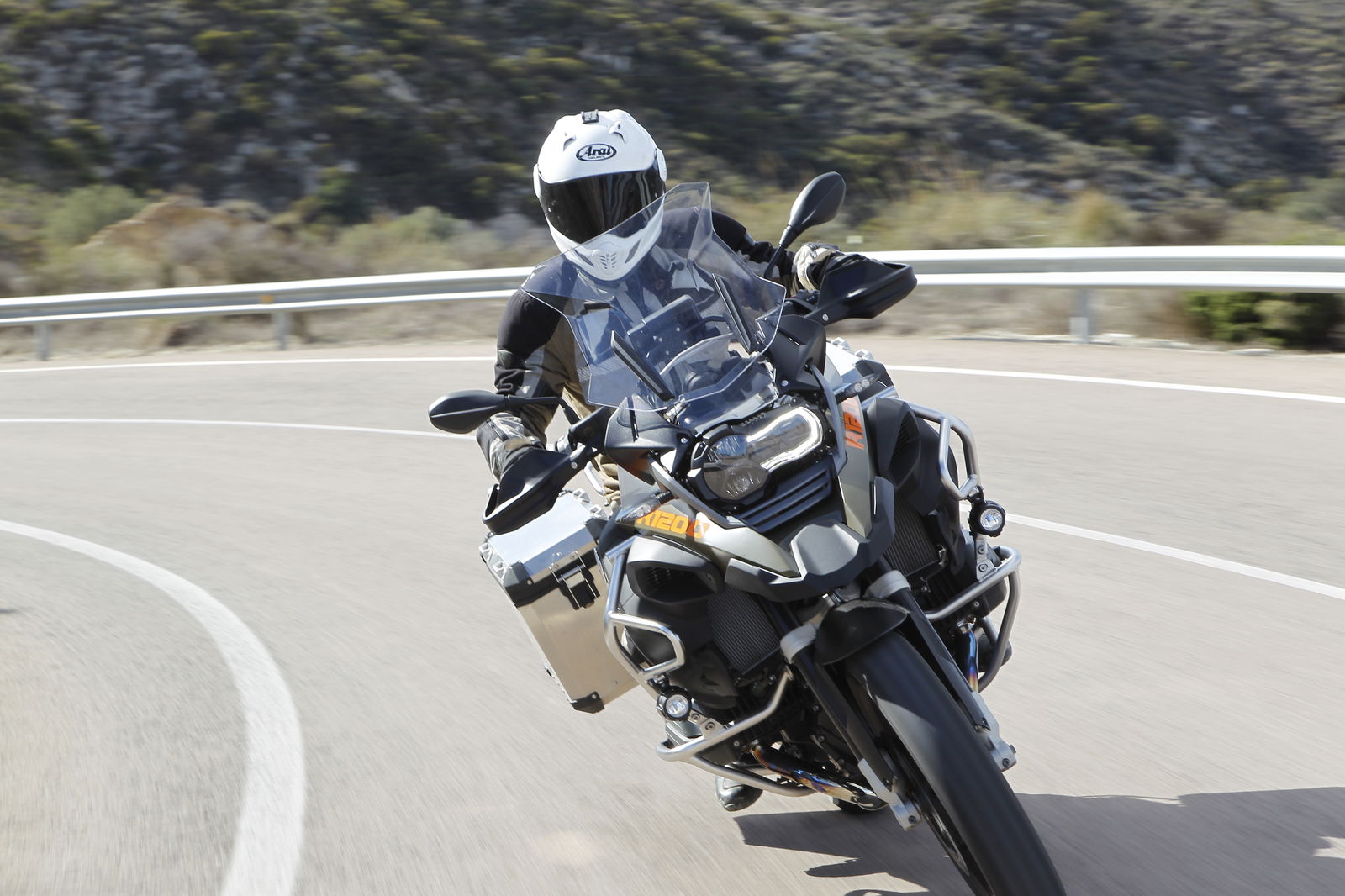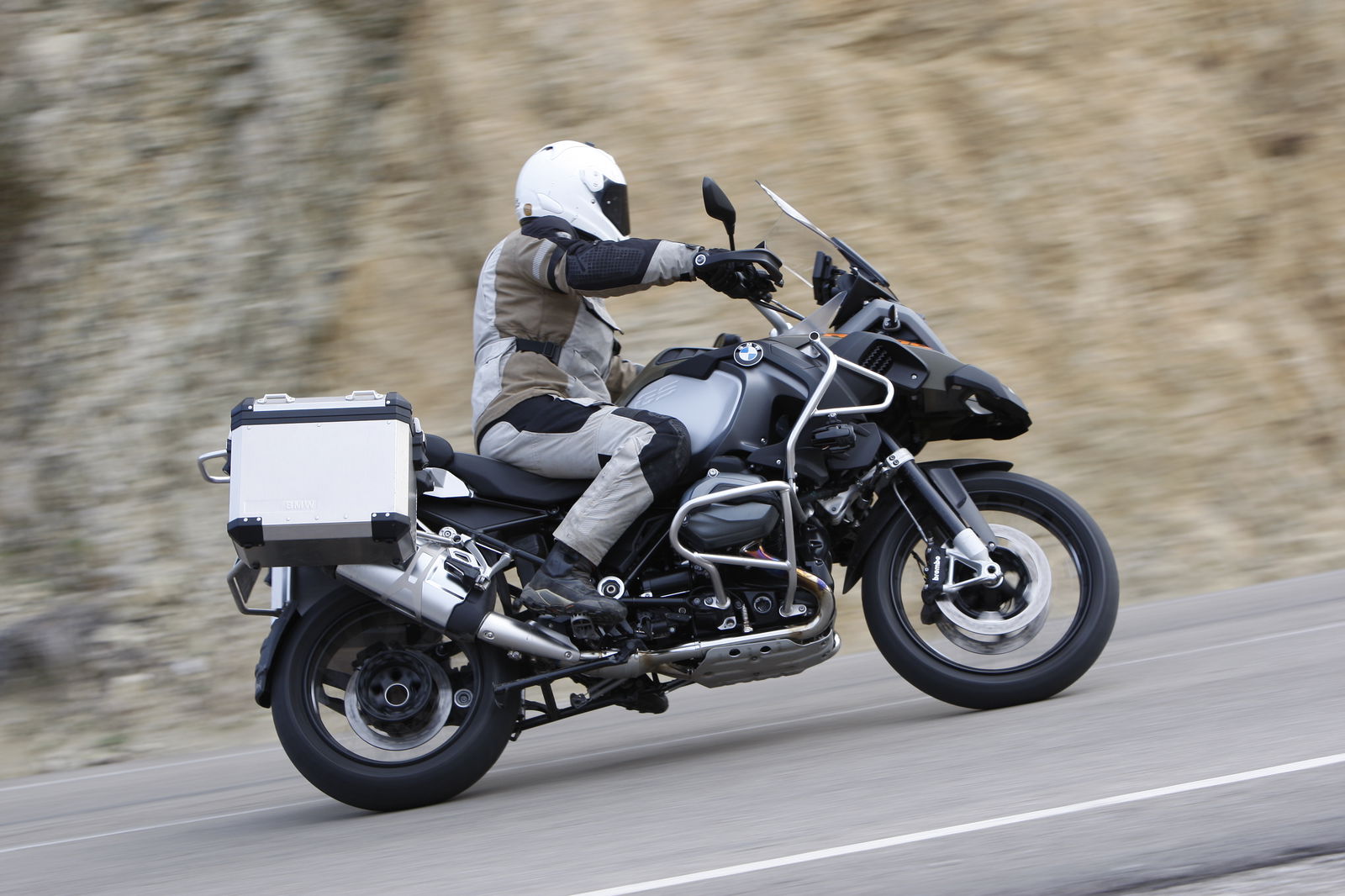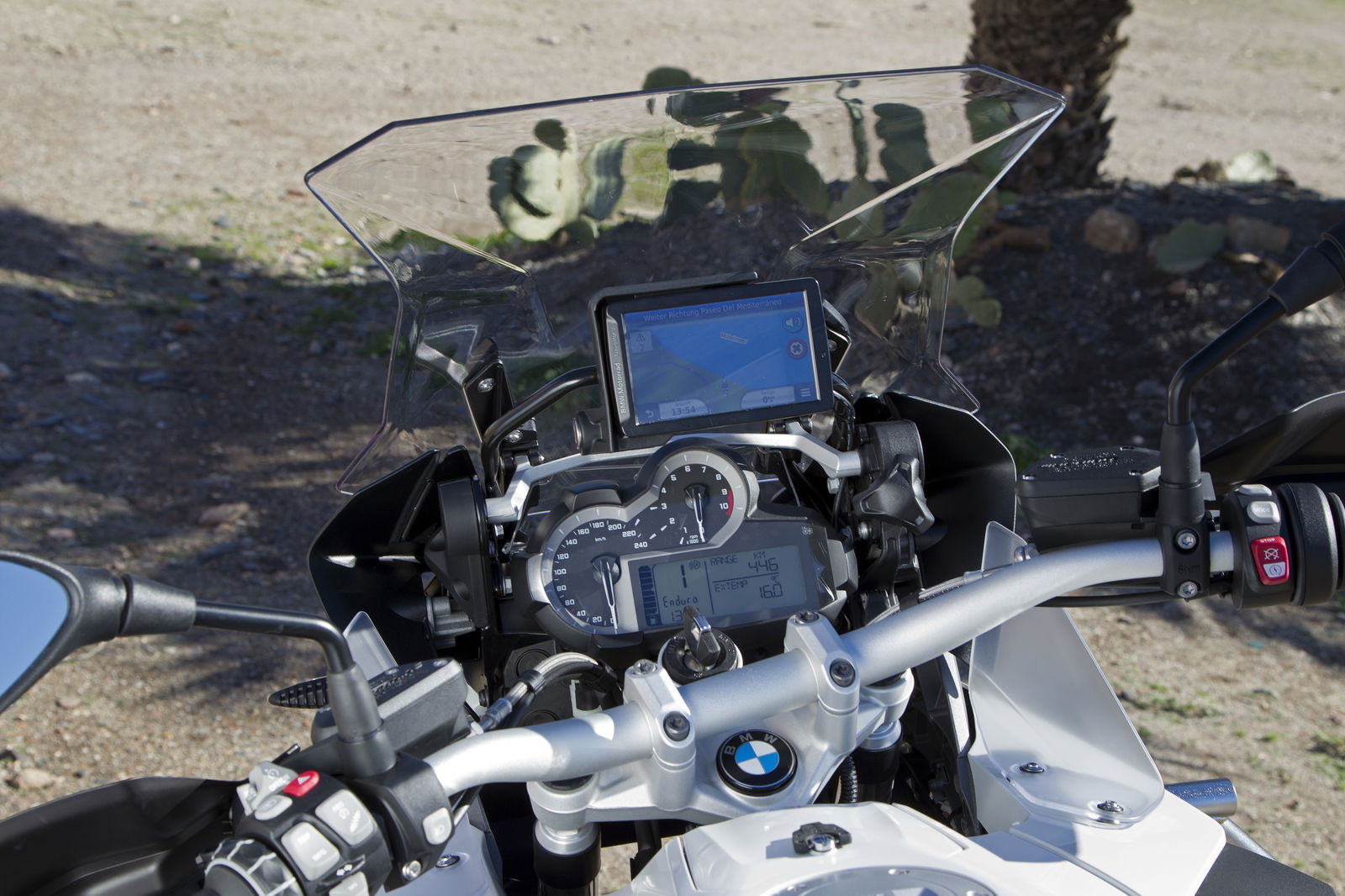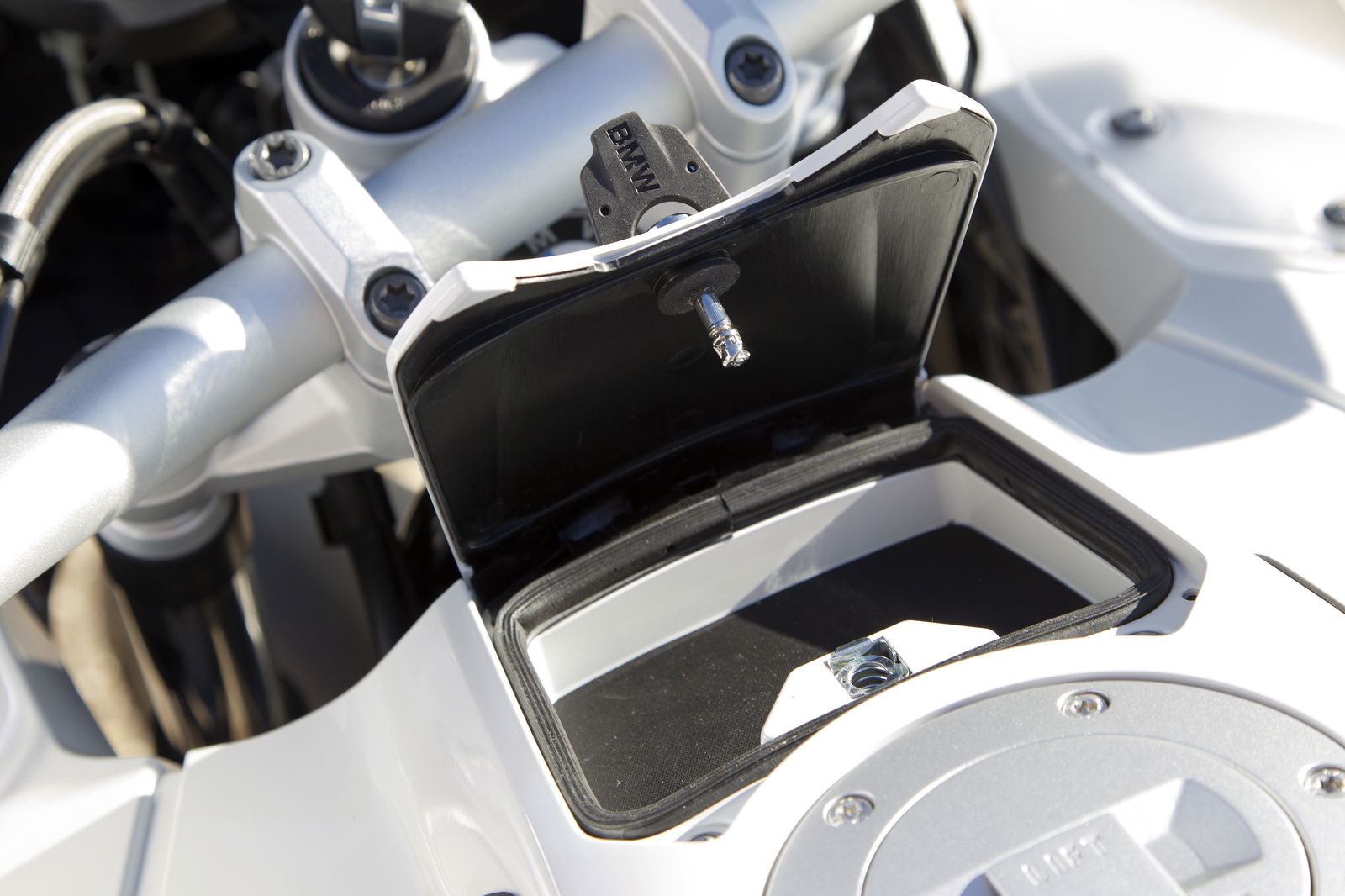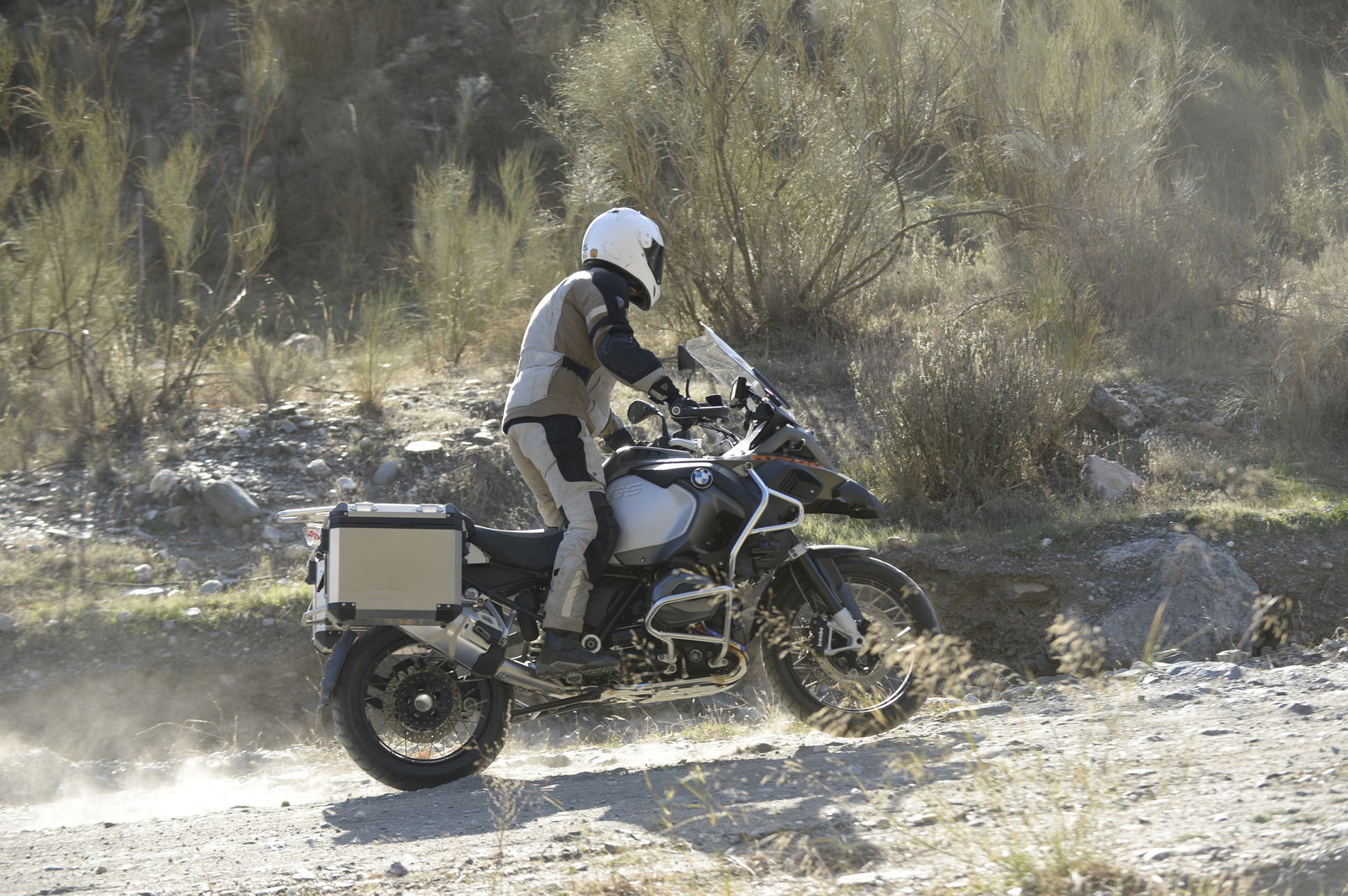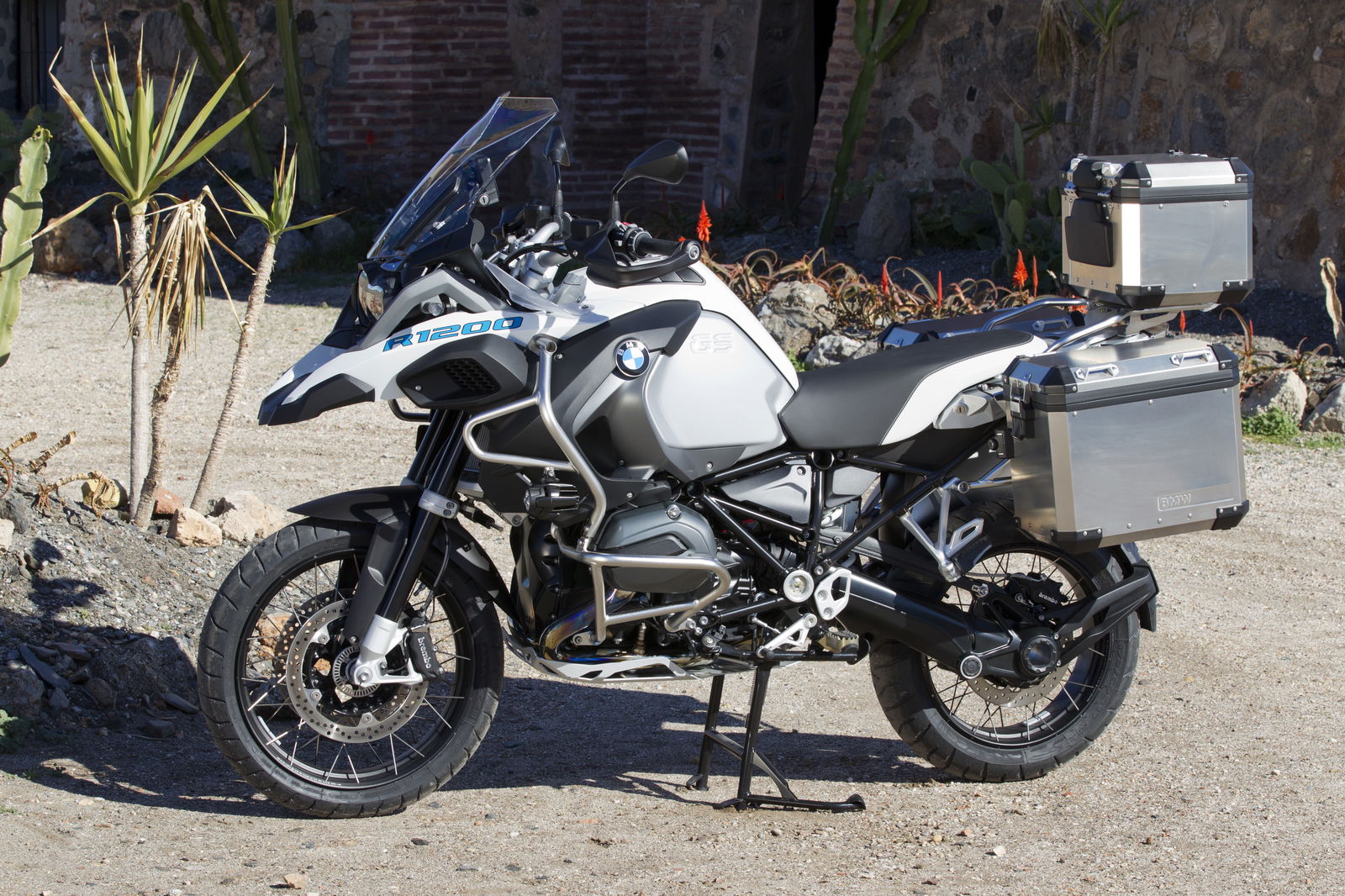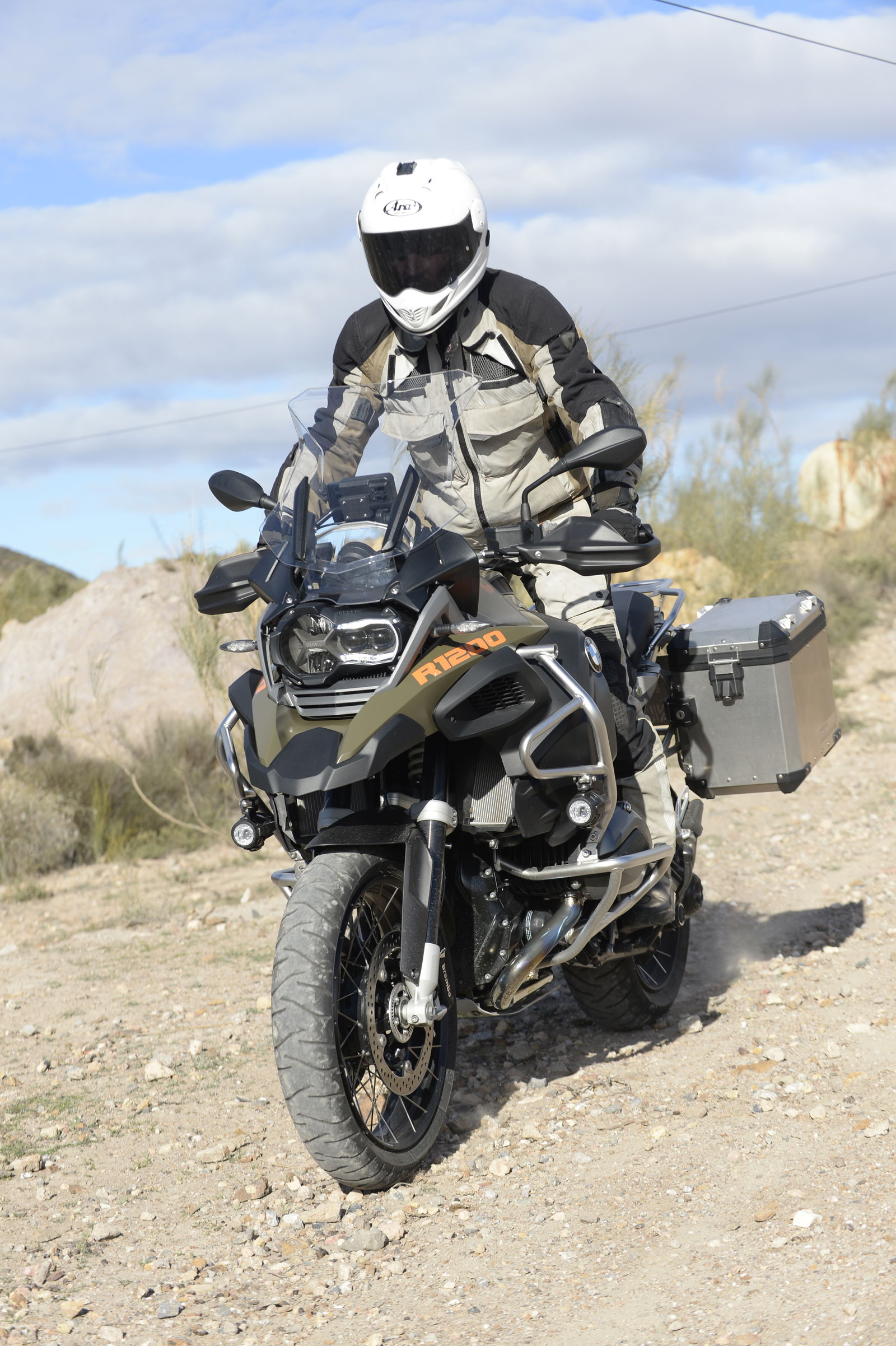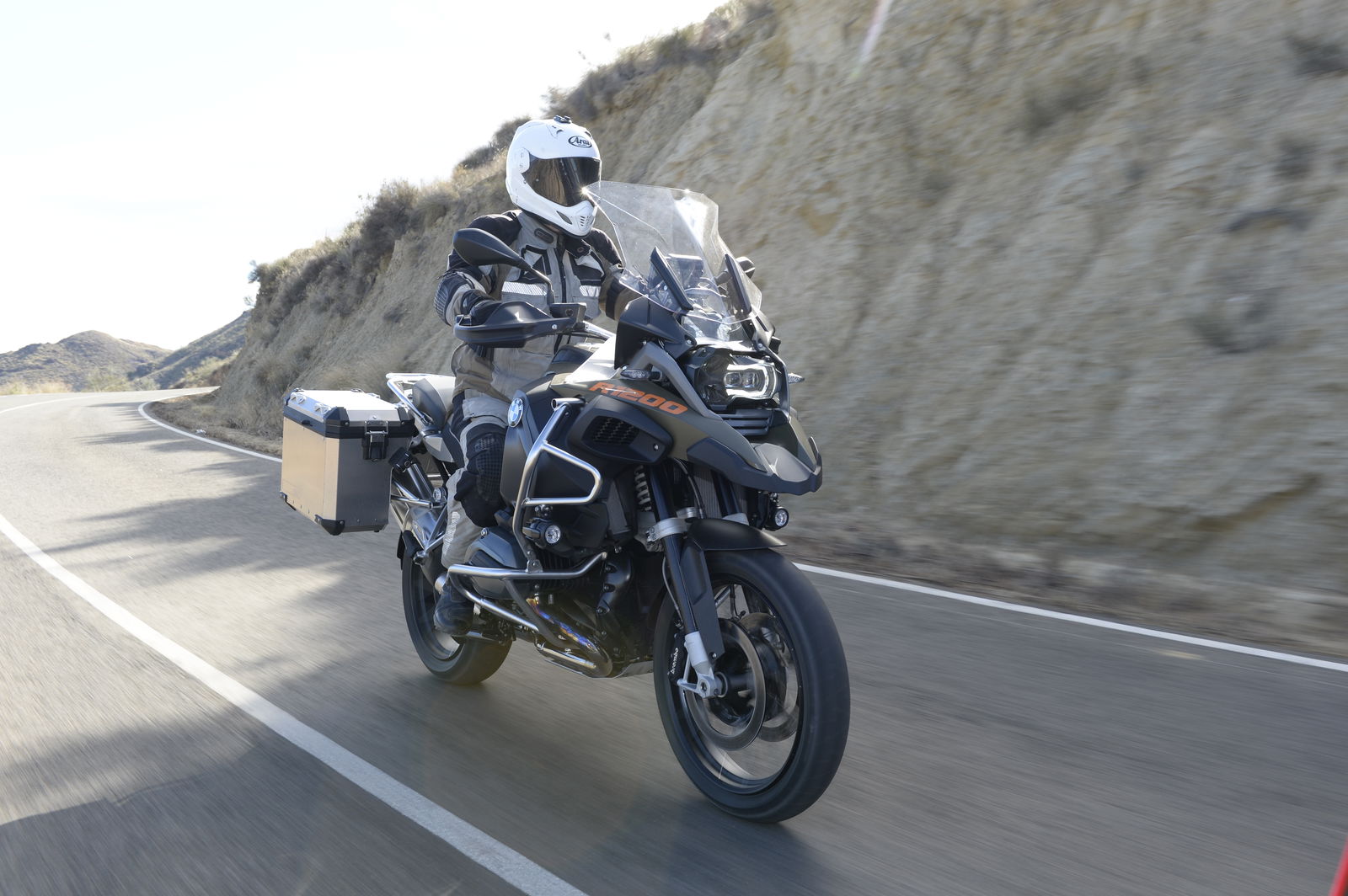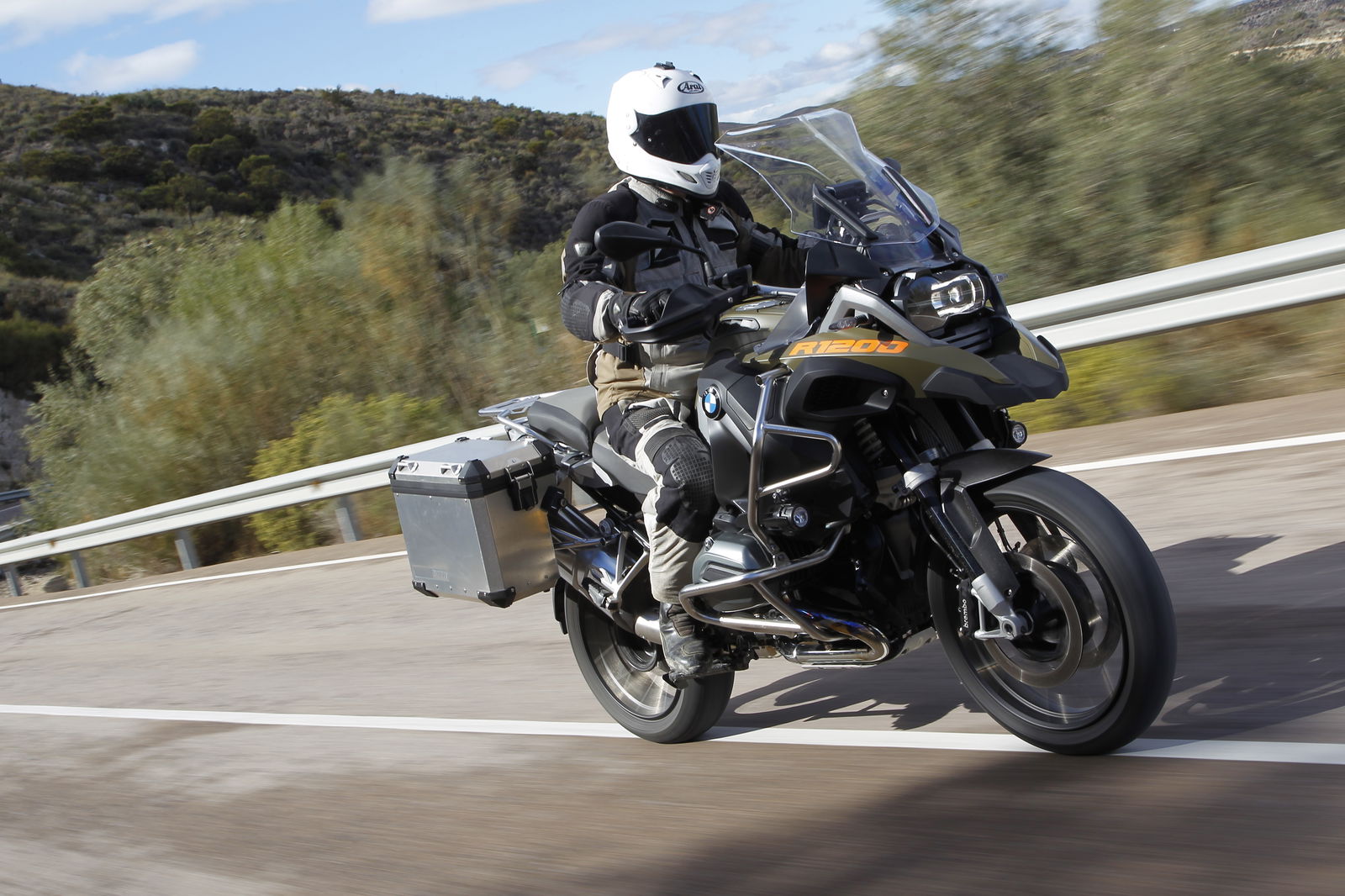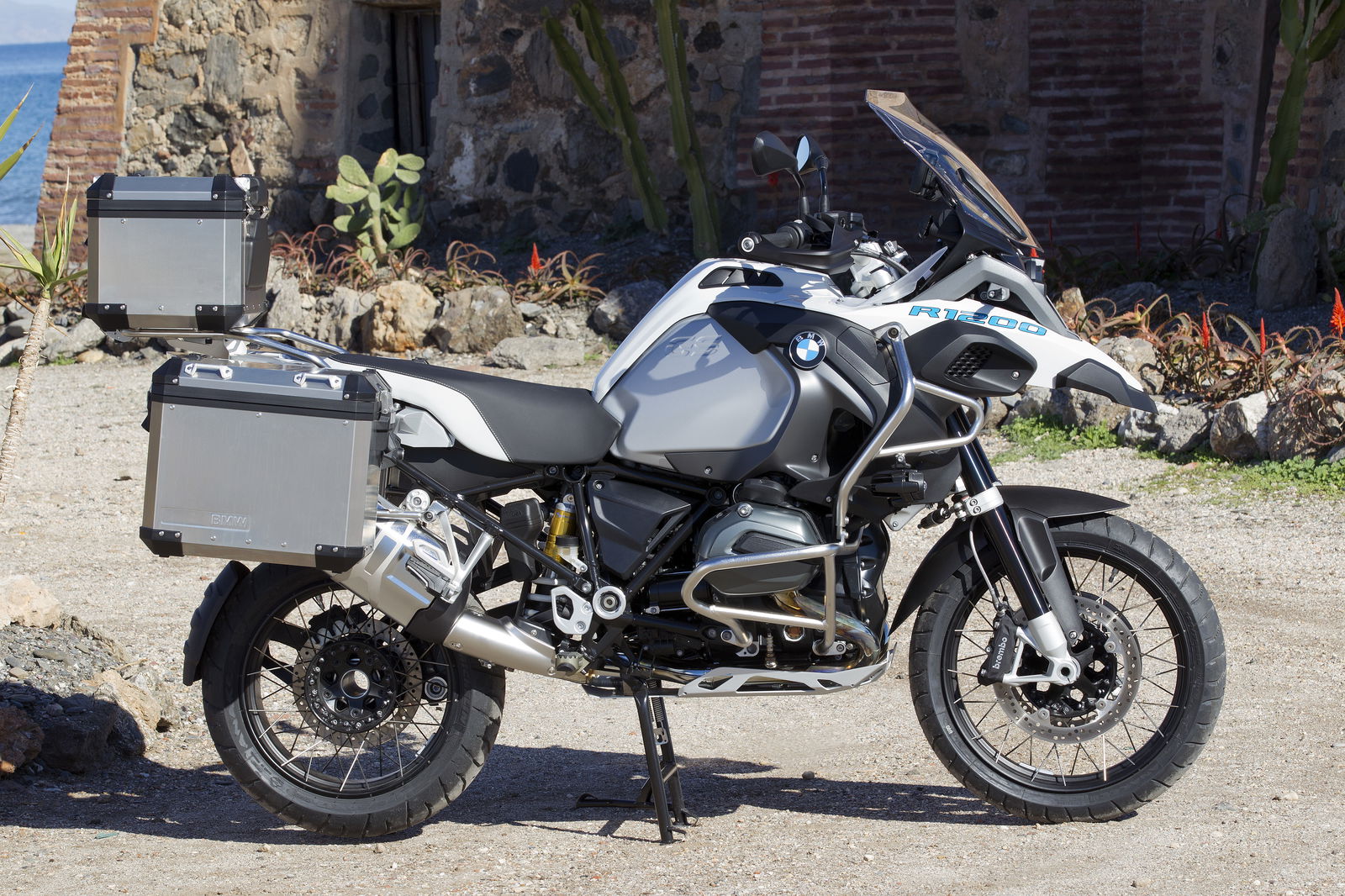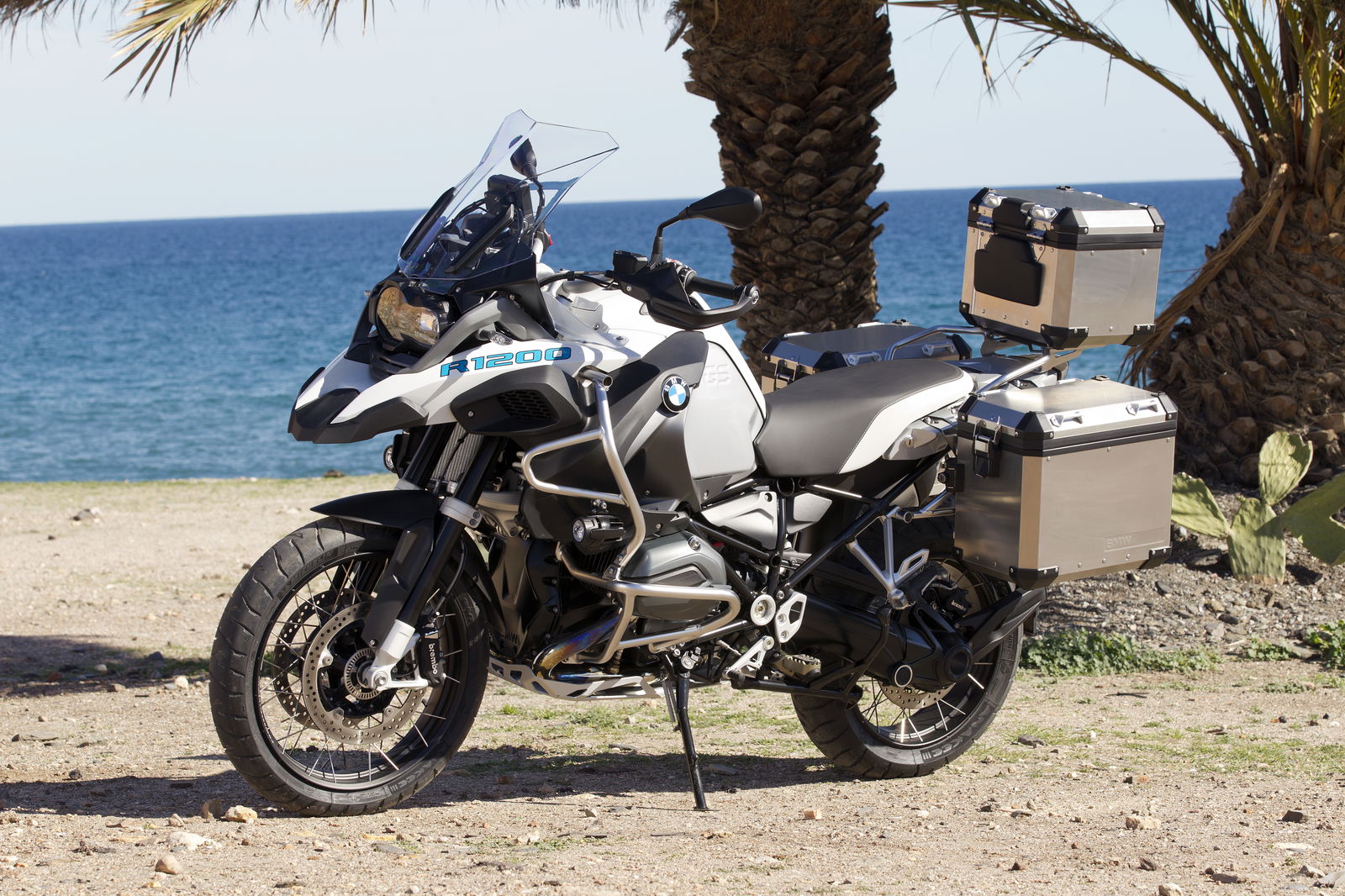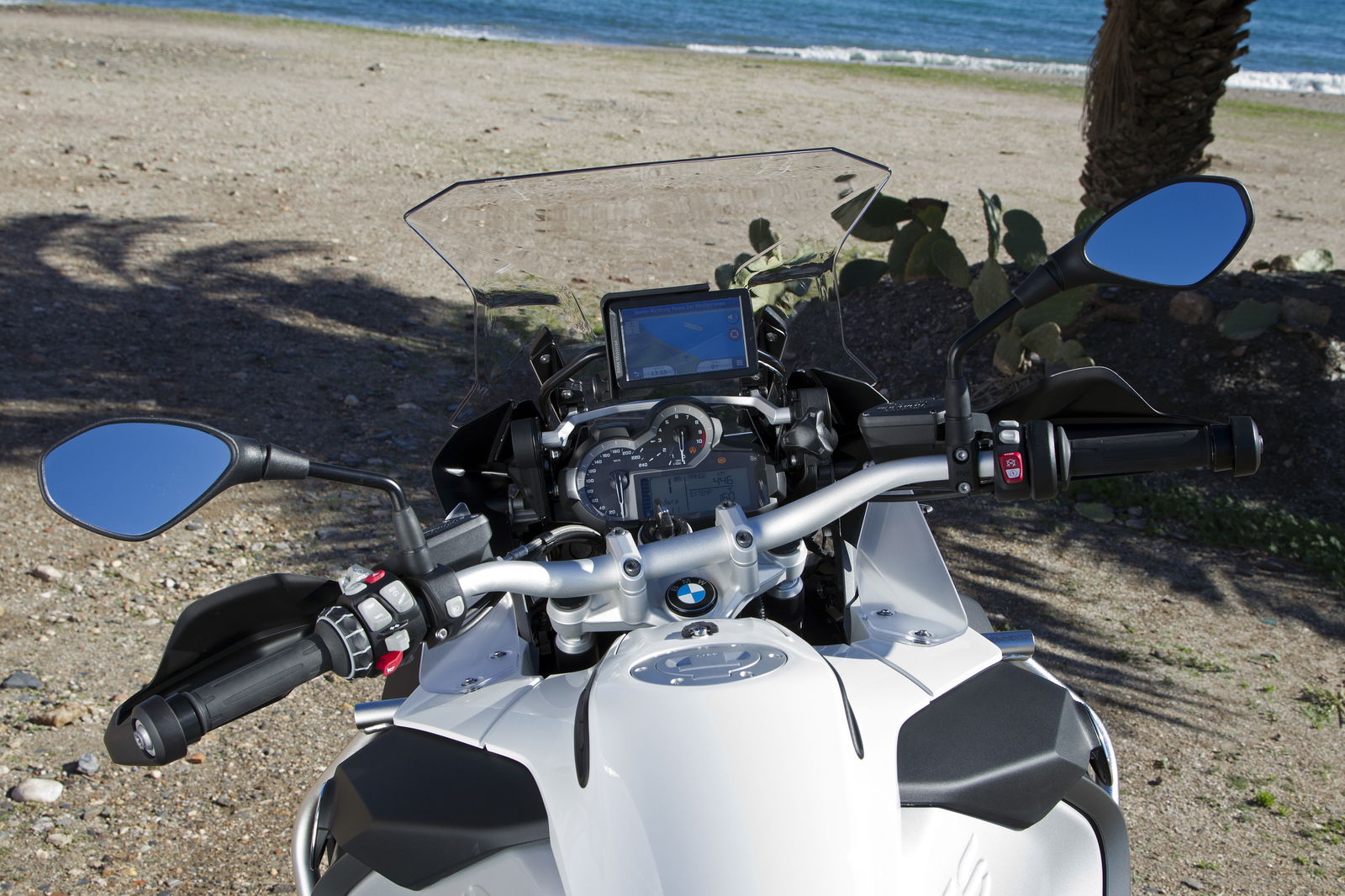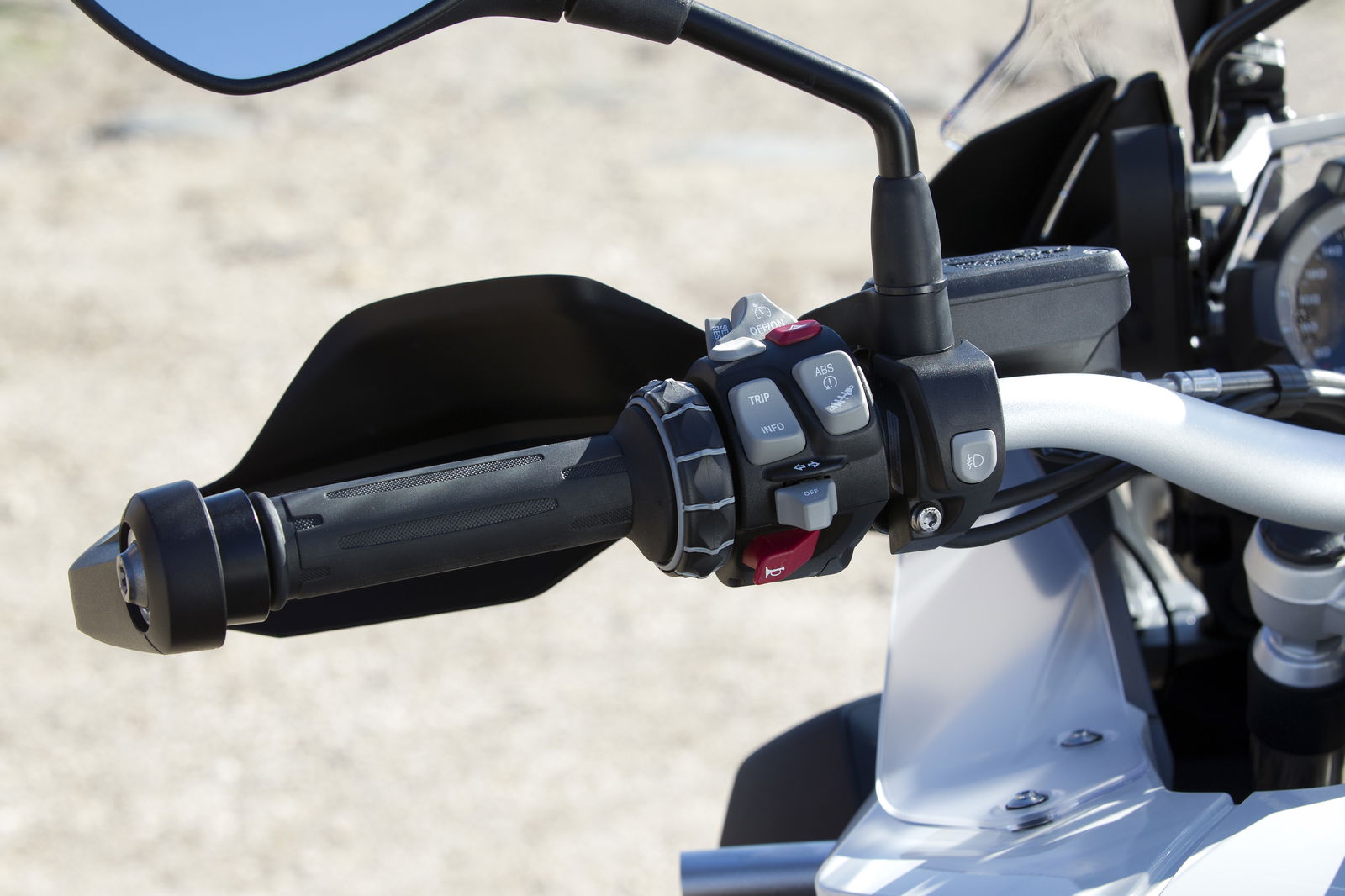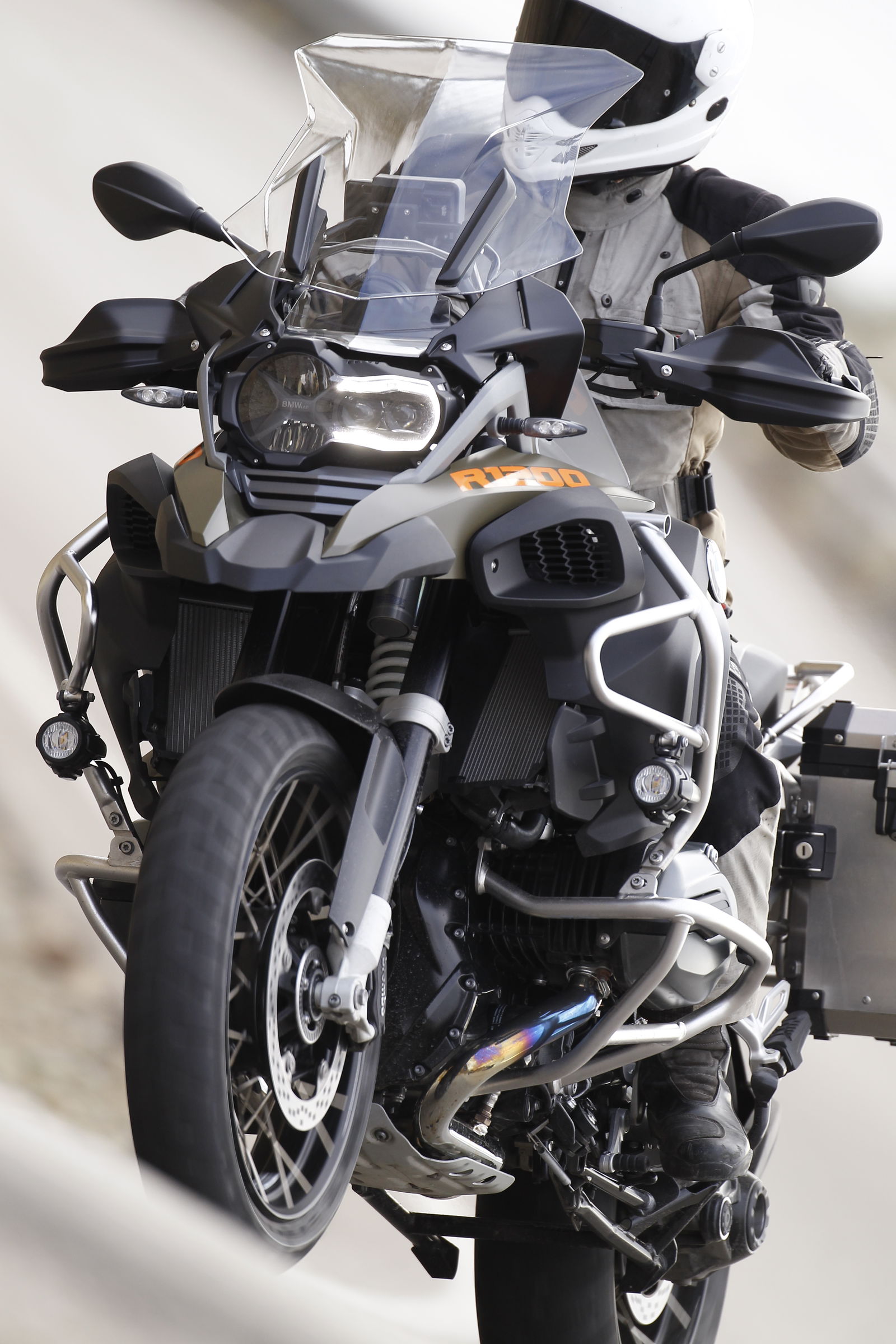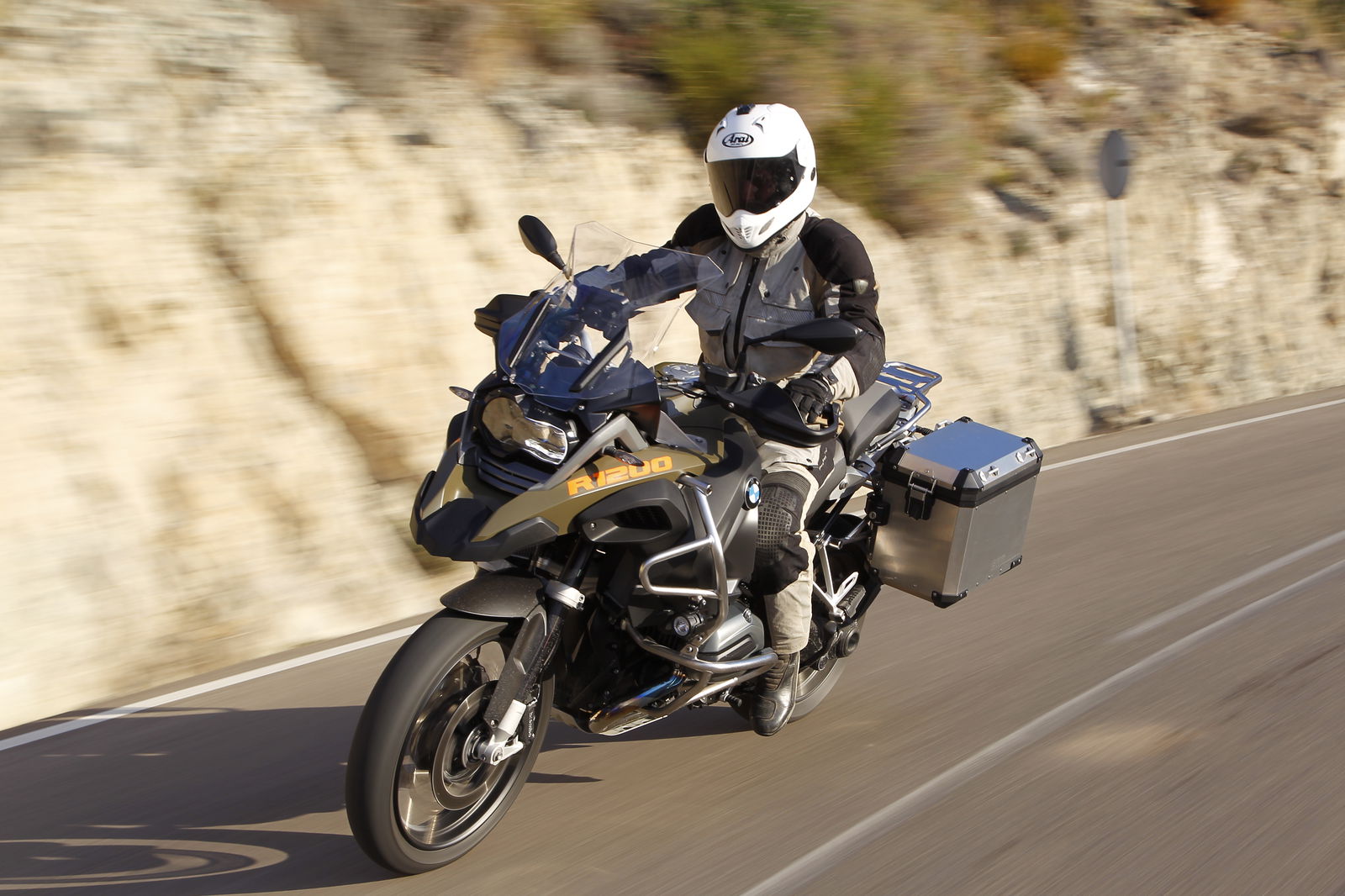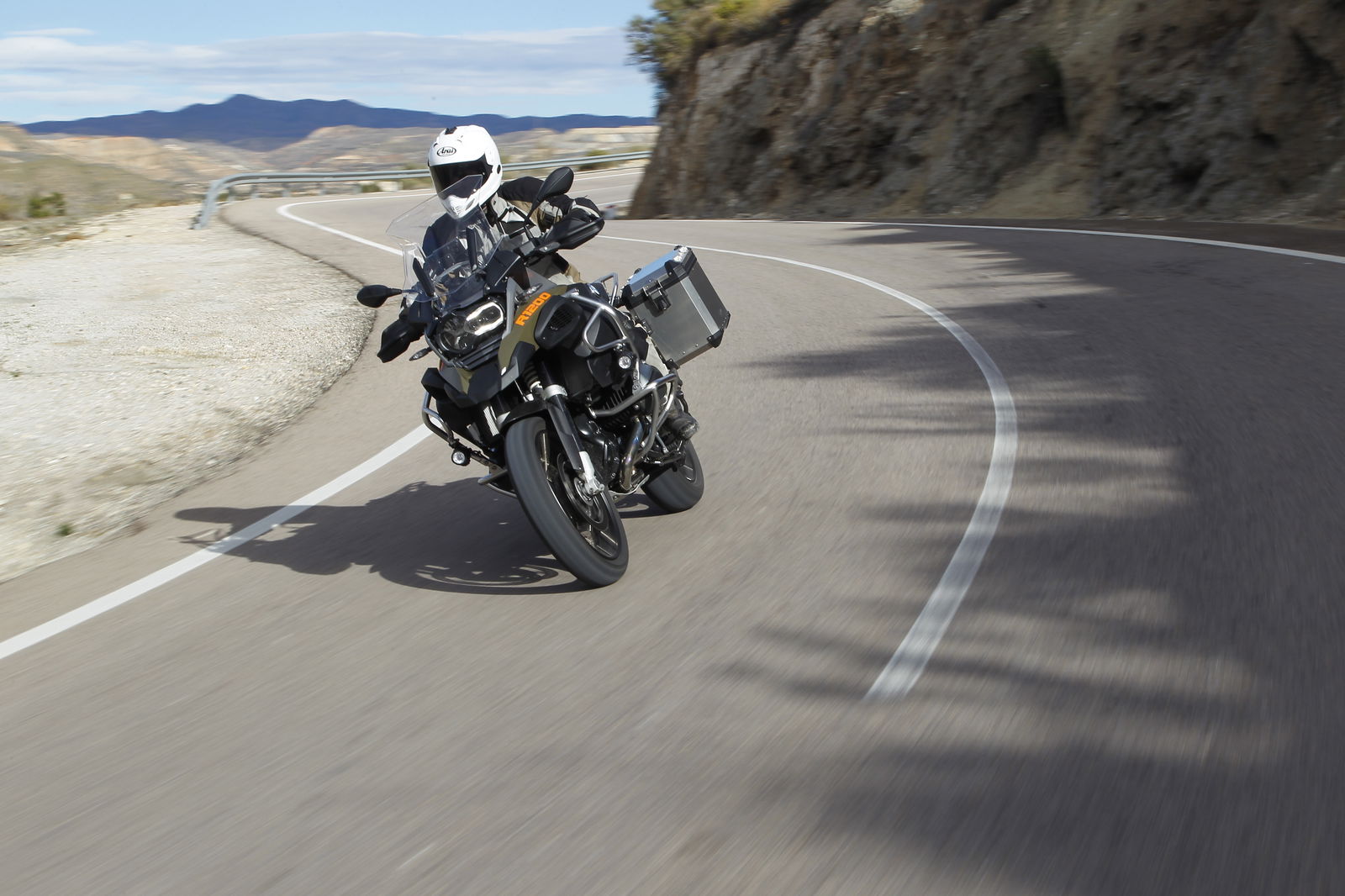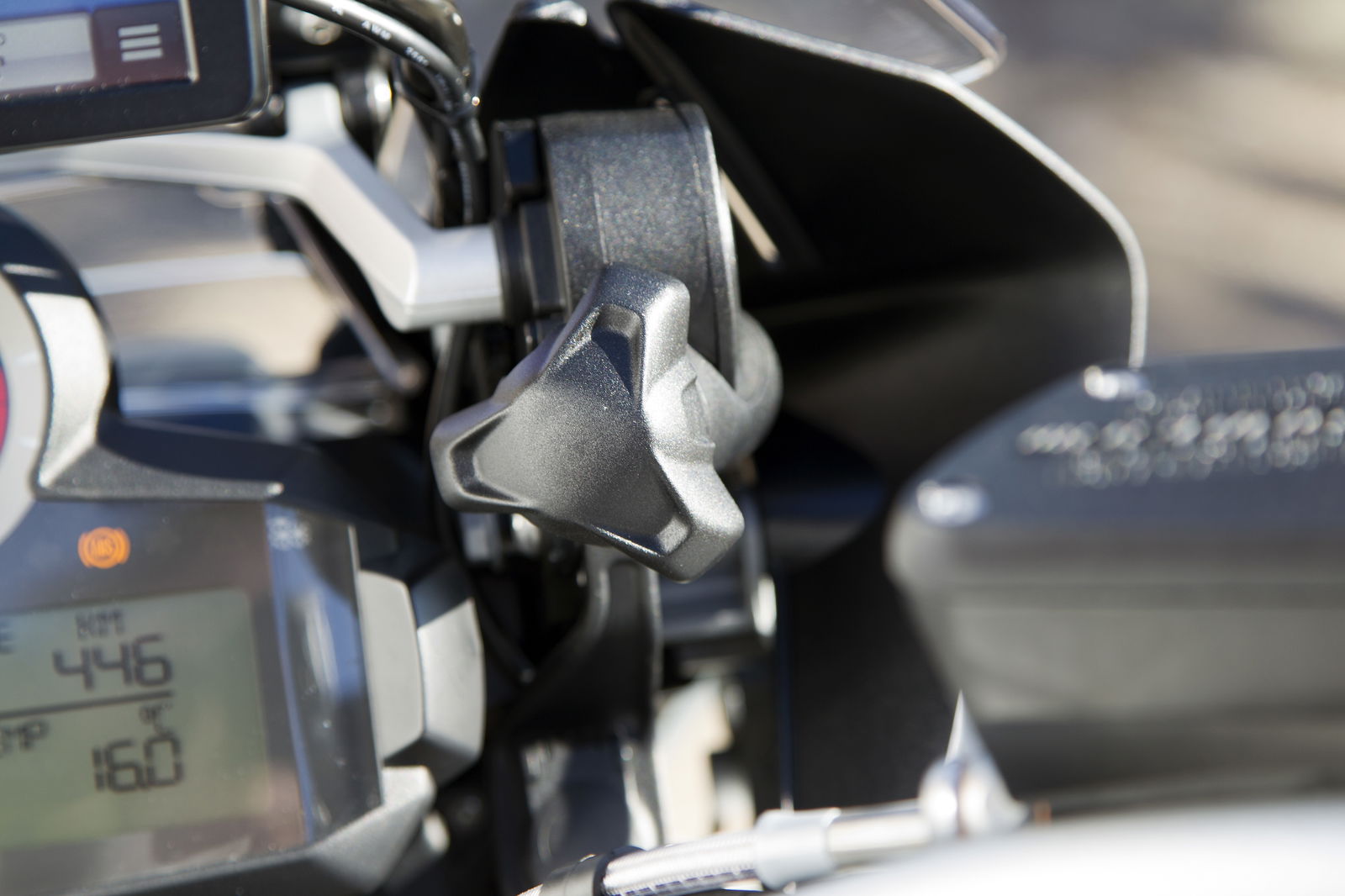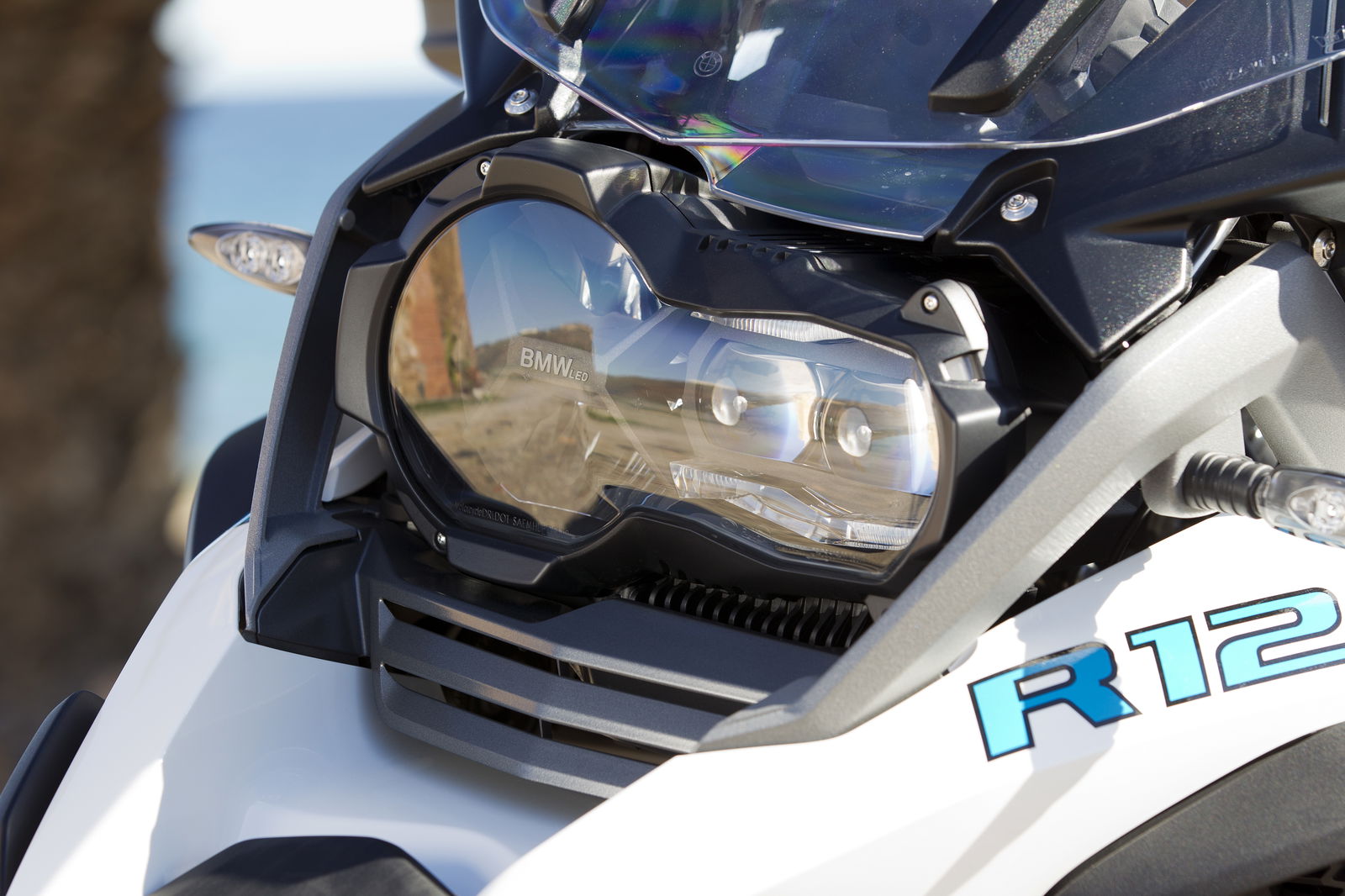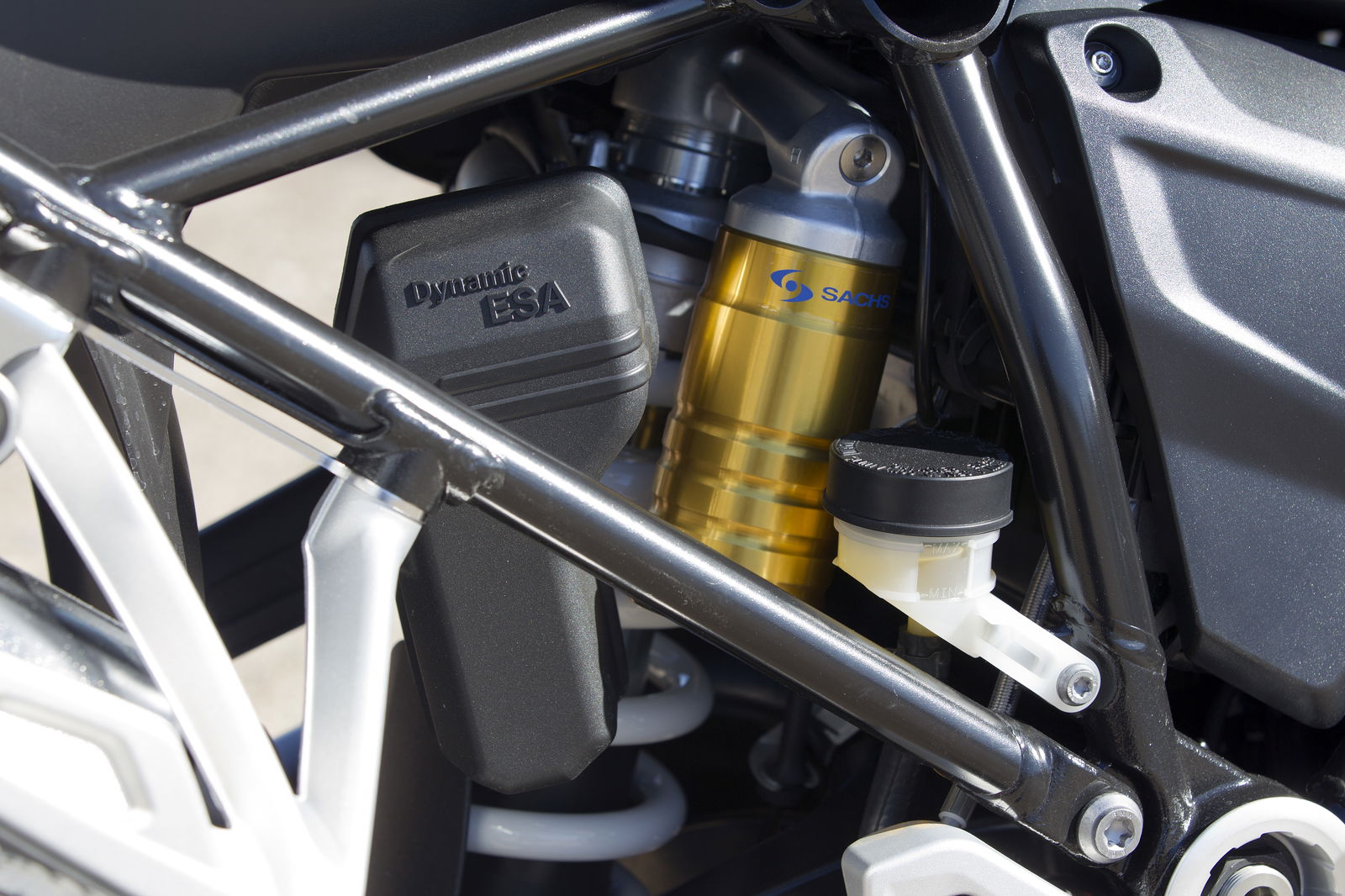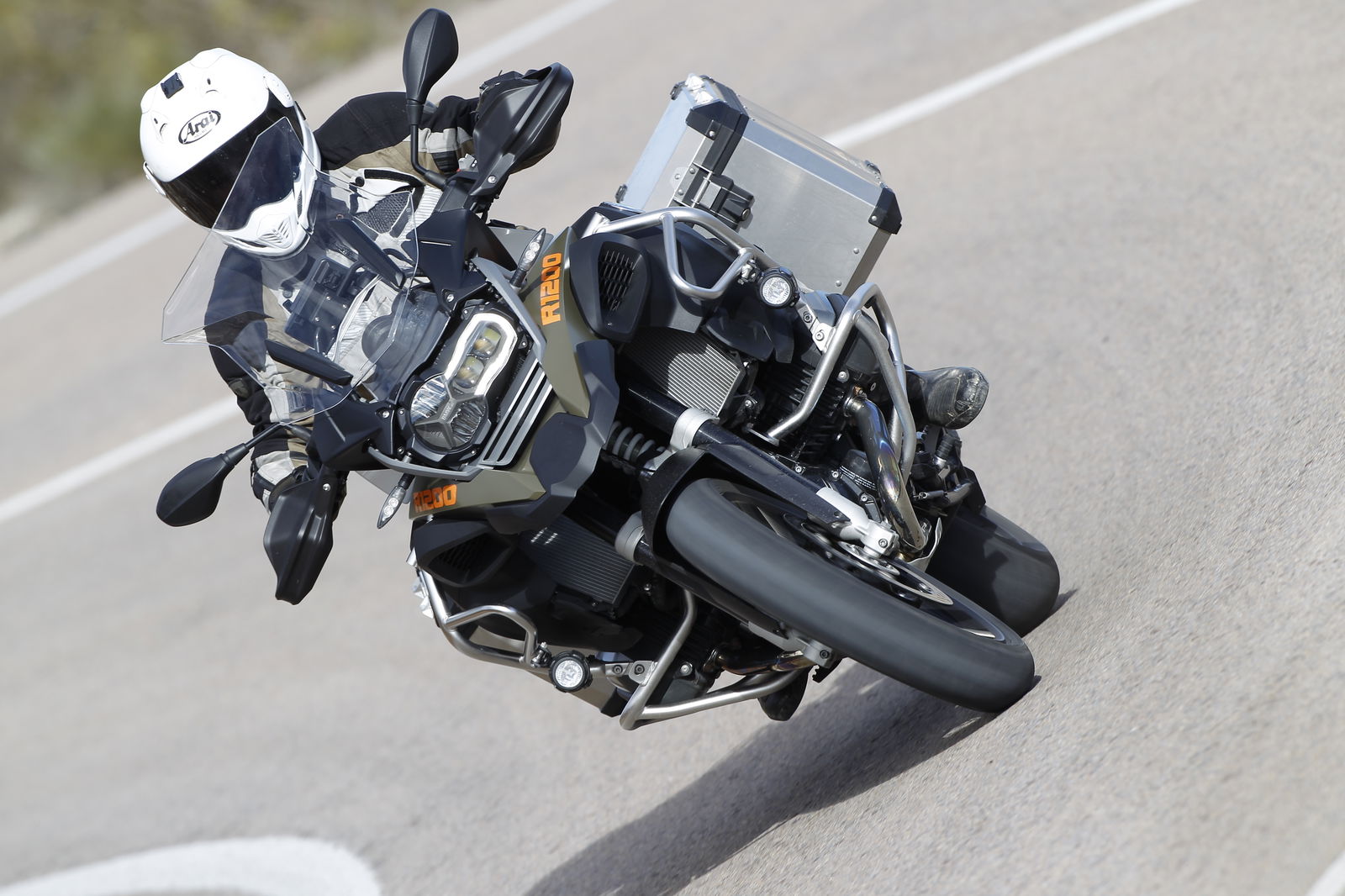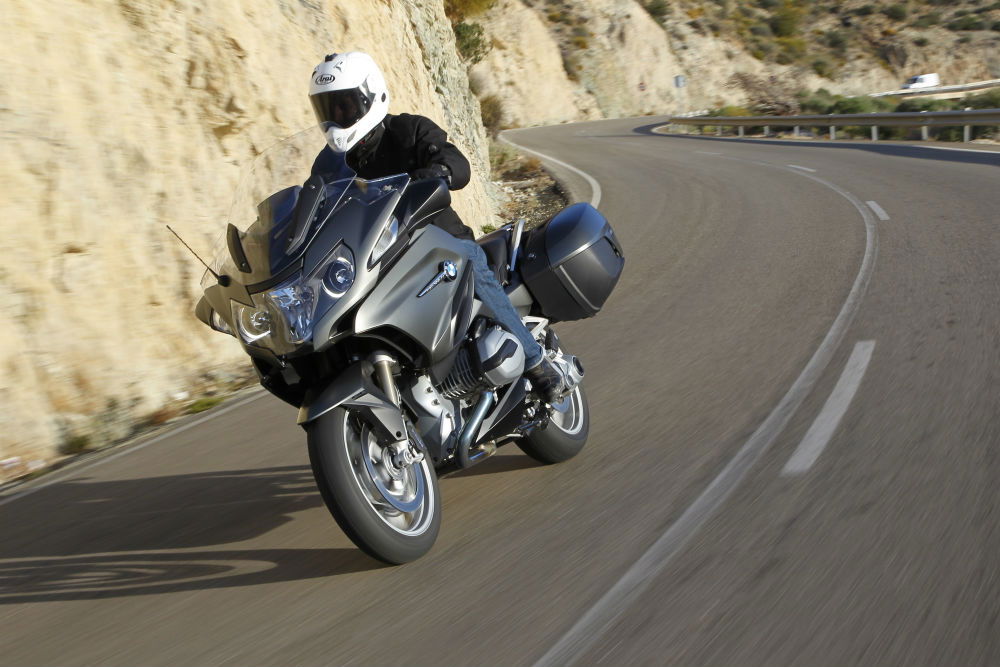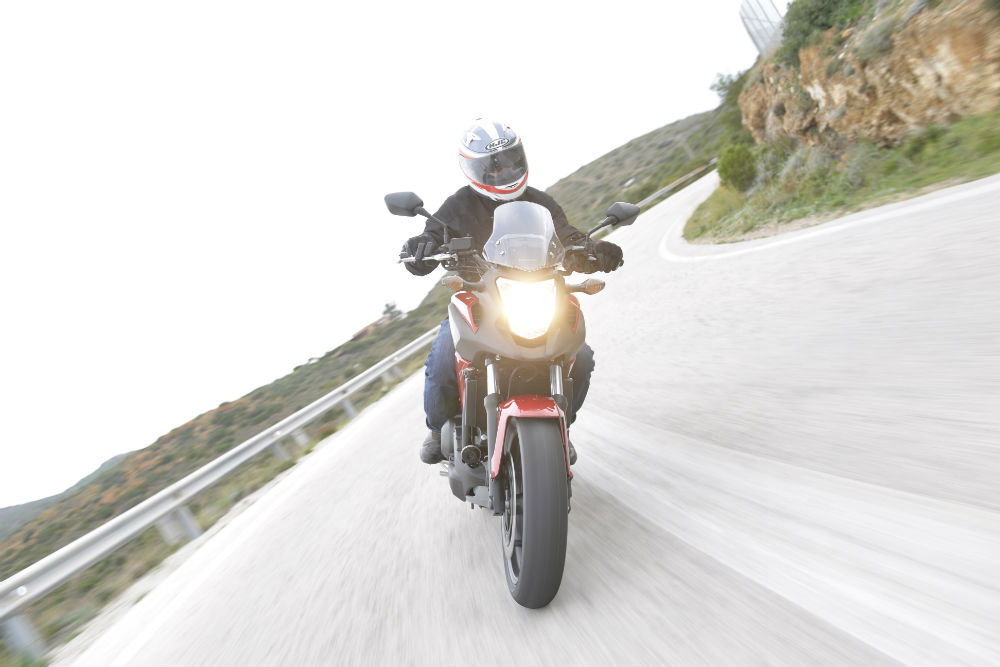First ride: BMW R1200GS Adventure review
The UK's most popular adventure bike is now faster and cleverer
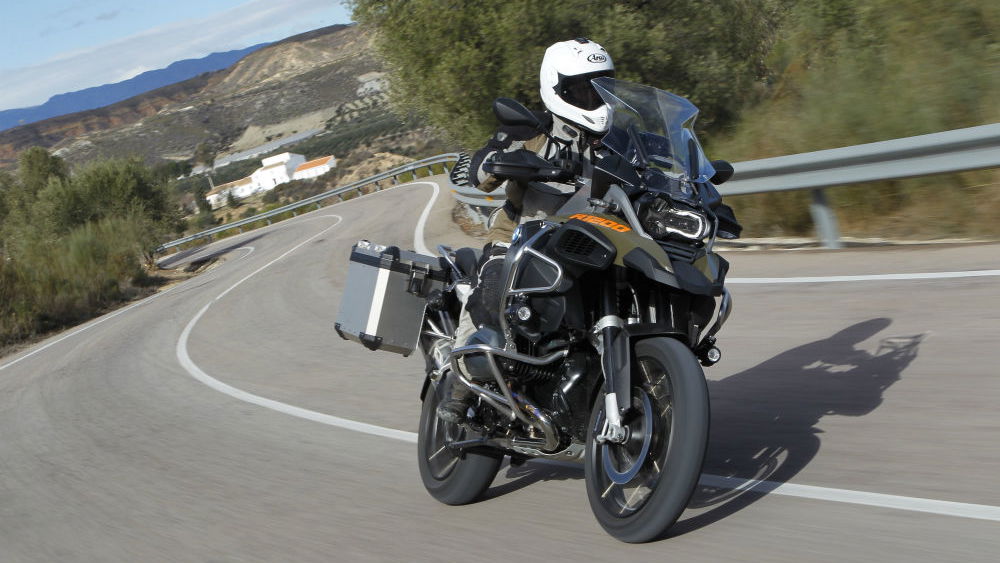
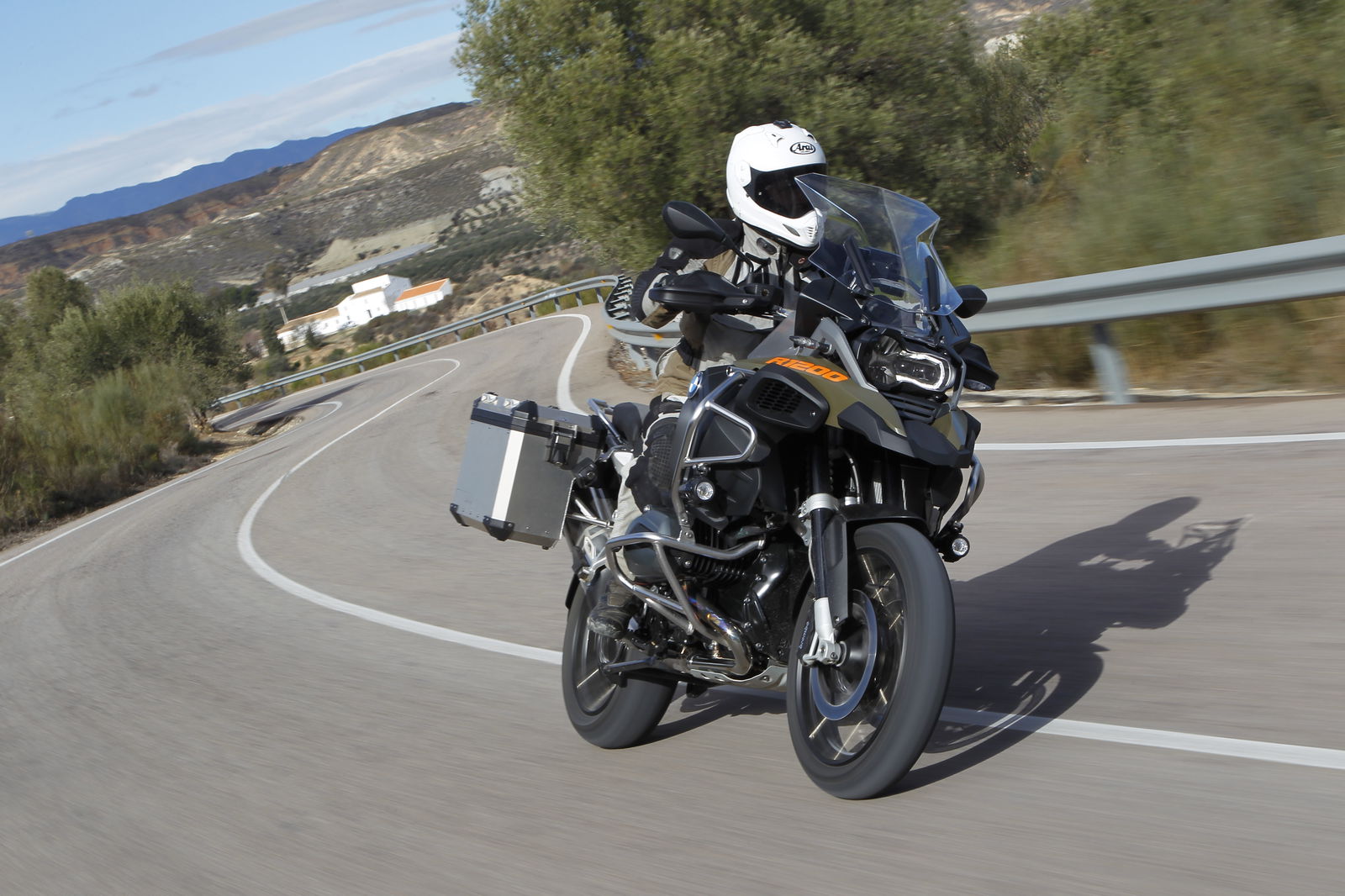
BMW BROKE with decades of tradition in 2013 by introducing its first liquid-cooled boxer engine on the R1200GS. Until then they’d all been air/oil-cooled.
For 2014, the firm has put the same liquid-cooled engine in the more off-road focussed R1200GS Adventure. It also gets the GS's fancy electronics package, which in turn was derived from that of BMW's flagship sports bike, the S1000RR.
It means that, as well as the new 125hp engine, the Adventure variant of the big GS now has BMW’s traction control system, called Automatic Stability Control, with optional semi active suspension.
There are two modes as standard, ‘Road’ and ‘Rain’, plus a further three optional modes for more spirited riding and off-roading: ‘Dynamic’, ‘Enduro’ and ‘Enduro Pro’. ABS is standard but the extra modes feature ‘Enduro ABS’, specifically for off-road.
That’s barely scratching the surface of the options and ‘packages’ available on the model. It’s baffling stuff. Fortunately, riding it is more straight forward.
The beauty of BMW boxer-twin engines is that they are hugely tractable, a rule not broken by this 1170cc liquid-cooled plant. It pulls from nothing.
The Adventure is heavy. It's 22kg heavier than the basic GS (10kg of that is extra fuel in the tank, which has a 30-litre capacity instead of 20). Some weight has been saved by replacing the old Adventure's 8kg plastic tank with a new, narrower aluminium one weighing 4kg. Nevertheless the bike is 260kg fuelled, before the aluminium panniers are added.
But it can still power out of corners from under 3,000rpm. As with the other models in the boxer range, the R1200RT tourer and R nineT retro naked, it means you can leave it in a high gear as you sweep from one bend to the next.
Then when you hit a straight the power builds smoothly but urgently toward that new 125hp peak. It's 15hp more than the old Adventure and brings the latest version significantly closer to the territory of KTM's 140hp 1190 Adventure and Ducati's 150hp Multistrada, both on paper and in practice.
With the traction control set to 'Dynamic' mode there's a more aggressive throttle response, whereas 'Road' and 'Rain' are smoother and more forgiving. Either way, shown a straight the new Adventure is fast by nearly anyone's standards. BMW say the new steering damper is needed because flat-out the bike goes 6mph faster than the old one. I didn't test the claim.
It's not shabby in corners either. BMW launched it in Spain alongside the new R1200RT tourer. That's only 14kg heavier than the Adventure, and riding the two back-to-back shows how nimble big adventure bikes can be for their size. The RT hides its weight well most of the time but can feel a bit of a handful as bends tighten up on twisty mountain roads. The GS feels perfectly at home on the same snaking passes, easier to point in and out of the corners. The brakes have masses of power. The GS, RT and R nineT all share the same Brembo Monobloc calipers, requiring a delicate input on the lever.
Meanwhile the Adventure offers nearly as much long-distance comfort as the RT. With the electronic suspension set to 'Soft', uneven surfaces are effortlessly absorbed. Switch to 'Hard' and there's less pitch under acceleration and braking, and more composure over high-speed bumps, while the bike also remains completely comfortable.
BMW has made the seat narrower but it doesn't seem to be at the expense of luxury. I was still comfortable after hours of riding. The change has made it slightly easier to reach the ground without actually lowering the seat height. I'm 5'9 and could only reach the ground with tiptoes on the old Adventure. Now, with the seat at the lowest of two settings, I can just about stand on the balls of my feet. It's a small but useful improvement. It's when getting on and off that the height can still seem inconvenient. If the side-stand points downhill, even slightly, getting the machine vertical requires effort, using your body to counter its weight.
The new, taller screen is just below my eye-level at its highest setting. Any higher and I'd be looking through it. It's possible to adjust its height when riding by slackening and sliding a knob. However, because the knob is to the right of the screen, this entails either taking your hand off the throttle or reaching over with the left, so it's probably best not to.
Sitting behind that screen, with the wind quietened, my back straight, lots of leg room, hands on those high, straight bars, I felt like I could ride 1000 miles, and have some real fun on the way.
This is what big adventure bikes do so well. They offer comfort to almost rival a dedicated tourer, but with more agility and a bit of gnarly, utilitarian off-road character.
As usual, BMW had thrown the options catalogue at the bikes they gave to journalists on the launch. The base version of the Adventure, which costs £11,650, already looks like a quality product. From that twiddly knob for adjusting the screen to the cigarette packet-sized glovebox atop the tank, nothing seems to let it down. It all feels as sturdy and thoughtfully designed as you'd expect at this price. Extras included heated grips (£230), the three extra riding modes (£275), cruise control (£390) and semi-active suspension (£740).
All of which, while expensive, lends to the impression that this is a bike to do anything and everything on. It could be a quick high-speed run. It could be the school-run. It could be conquering new frontiers.
It's a bike that makes you want to ride around the world, if not altogether off-road, then at least by lesser-known routes, and maybe without a map.
Model tested: BMW R1200GS Adventure
Price: from £11,650
Power: 125hp
Wet weight: 260kg
Torque: 92lbft
Seat height: 890/910mm
Colours: White, blue, olive
Availability: March
